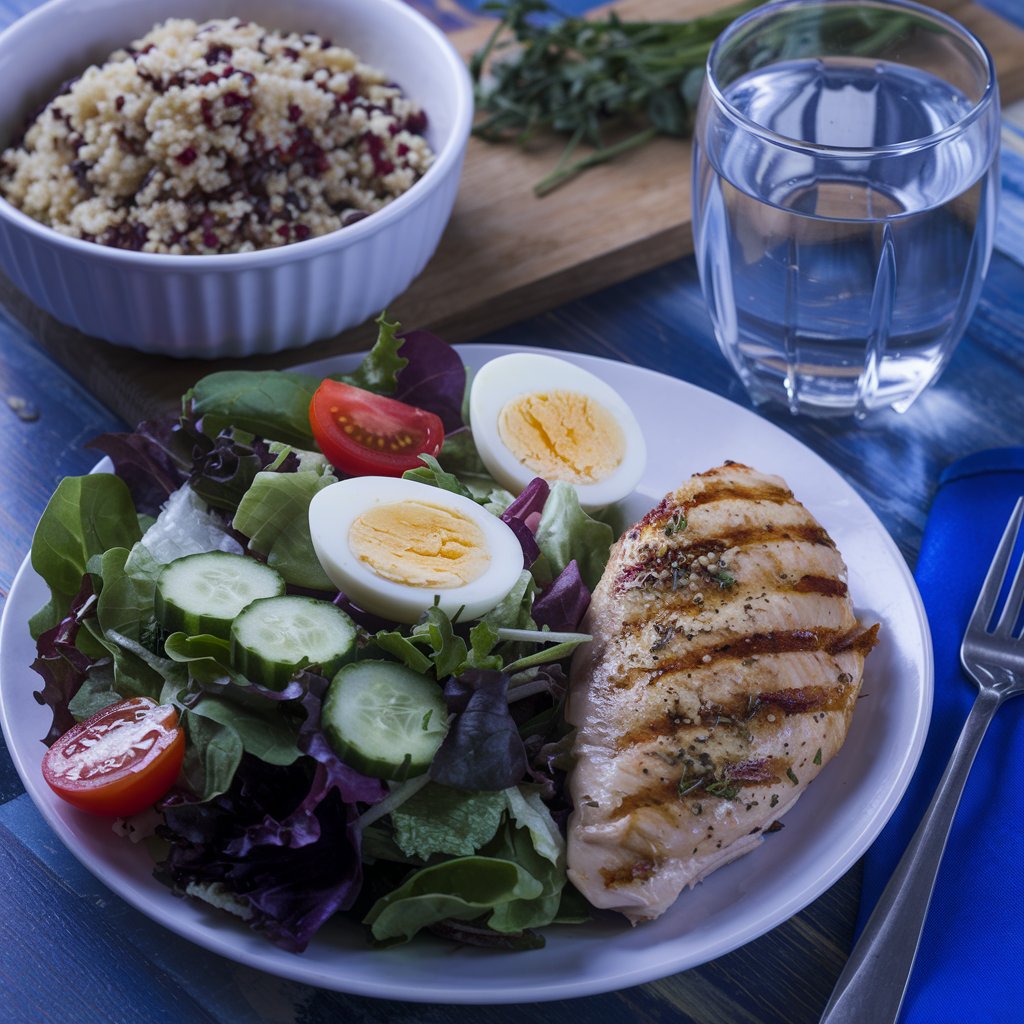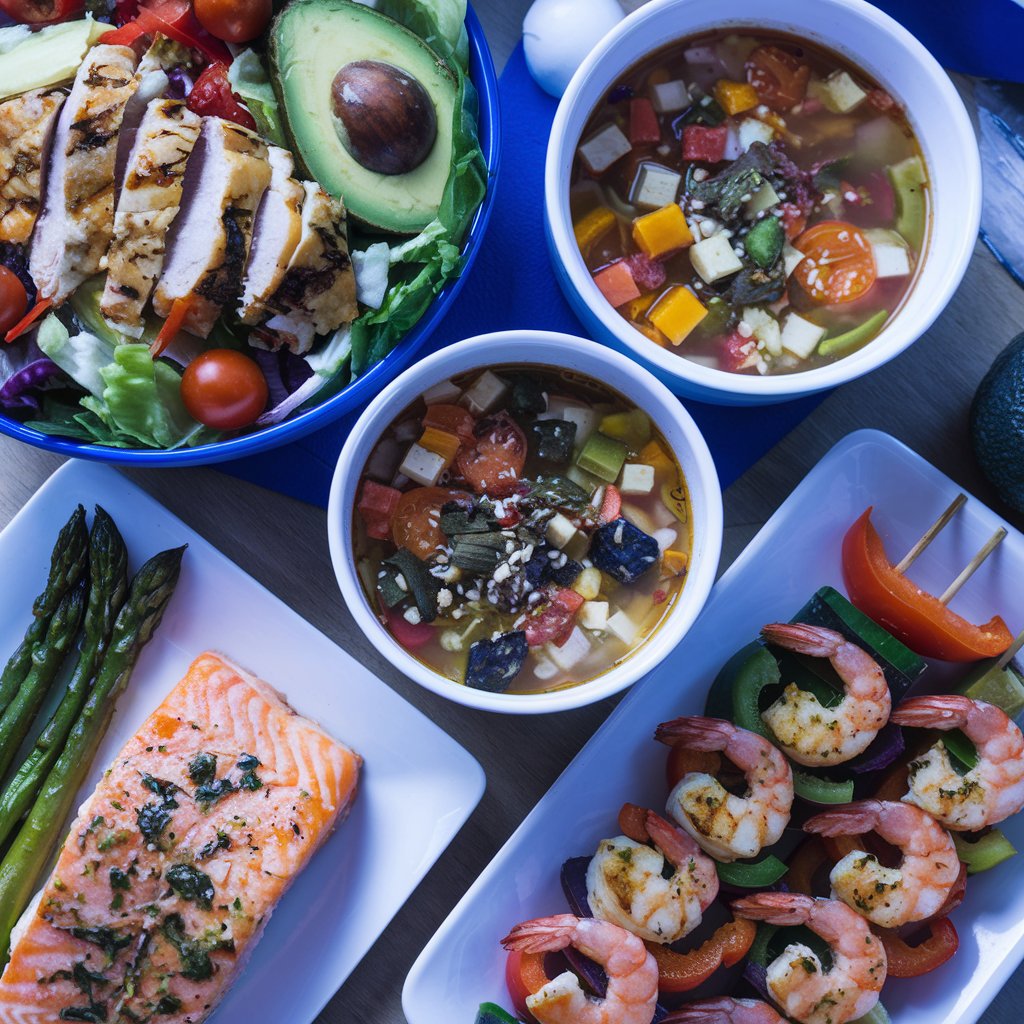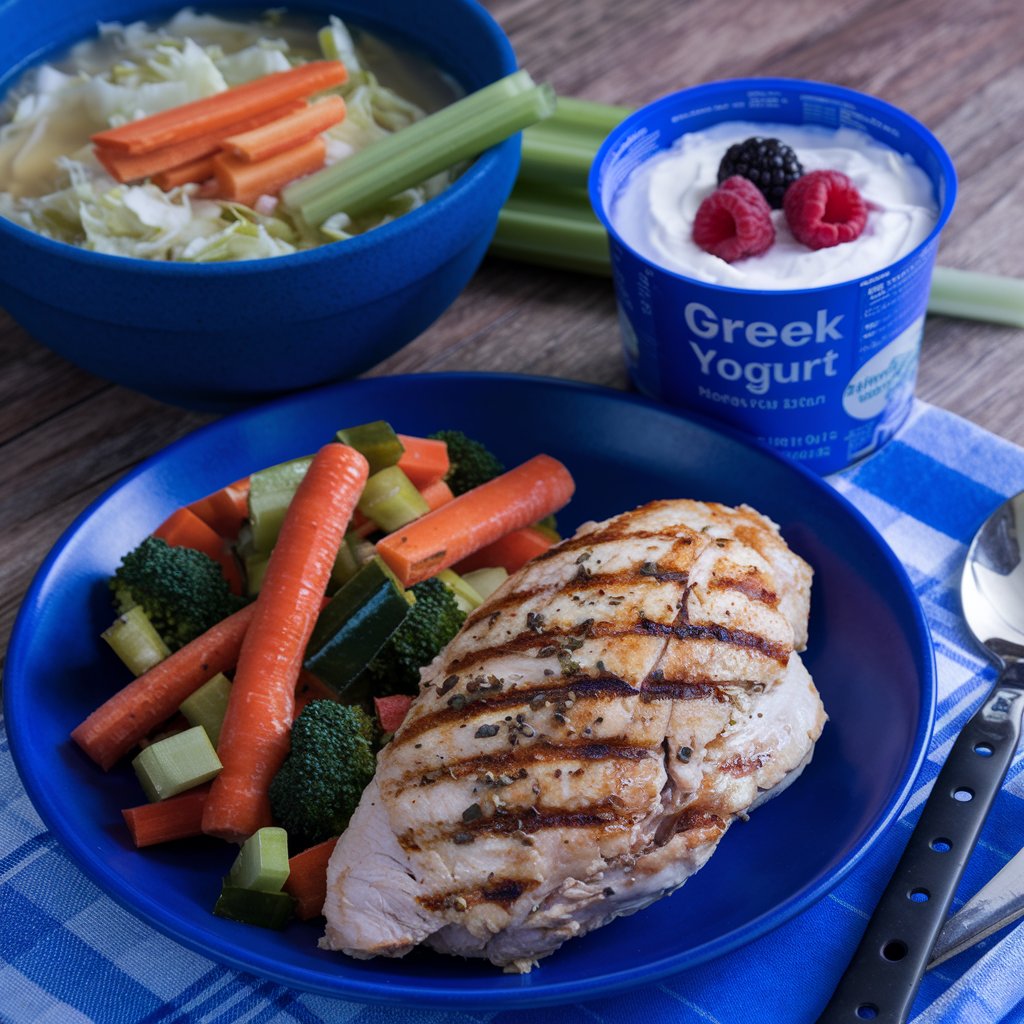“Effective Weight Loss Meal Plan: A Comprehensive Guide to Healthy Eating, Portion Control, and Sustained Results”

Introduction
Embarking on a weight loss journey can be both exciting and daunting. A well-structured meal plan can be the secret weapon to staying on track and achieving your goals. This guide dives into everything you need to know about crafting the perfect meal plan to shed those extra pounds while keeping your body nourished and satisfied.
Understanding Weight Loss
The Science Behind Weight Loss
Weight loss boils down to a simple equation: burn more calories than you consume. This is known as creating a caloric deficit. By consistently eating fewer calories than your body needs, it will start burning stored fat for energy.
Caloric Deficit: The Key to Shedding Pounds
To lose one pound, you need to create a deficit of approximately 3,500 calories. This might sound overwhelming, but breaking it down into smaller daily goals—like reducing 500 calories per day—makes it manageable.
Role of Metabolism in Weight Loss
Metabolism plays a crucial role in determining how many calories your body burns at rest. While genetics impact metabolism, factors like muscle mass, activity level, and dietary choices also contribute.
Why a Meal Plan is Essential
Benefits of a Structured Approach
A meal plan takes the guesswork out of dieting, ensuring you consistently hit your nutritional targets. It eliminates the temptation to grab unhealthy, last-minute food options.
Avoiding Unhealthy Snacking
When you have a meal plan, you’re less likely to resort to sugary snacks or fast food. Planning ensures you have healthy options readily available.
Staying Consistent with Calorie Intake
Consistency is key for weight loss. A structured meal plan ensures that you’re neither overeating nor under-eating, both of which can hinder progress.
Key Components of a Weight Loss Meal Plan

Macronutrients: Proteins, Carbohydrates, and Fats
- Proteins: Essential for muscle repair and satiety. Include sources like chicken, fish, tofu, and legumes.
- Carbohydrates: Opt for complex carbs like whole grains, vegetables, and fruits for sustained energy.
- Fats: Healthy fats like avocados, nuts, and olive oil support overall health and keep you feeling full.
Micronutrients: Vitamins and Minerals
Incorporate a variety of colorful fruits and vegetables to ensure you’re meeting your vitamin and mineral needs. Think leafy greens, berries, and citrus fruits.
Hydration: The Underrated Player
Drinking enough water is crucial for weight loss. Not only does it help regulate hunger, but staying hydrated also supports optimal metabolism.
Setting Realistic Goals
How to Calculate Your Daily Calorie Needs
Start by determining your Basal Metabolic Rate (BMR), which represents the calories your body needs at rest. Use online calculators or consult a dietitian to estimate this. Adjust based on activity level.
Determining Safe Weight Loss Targets
Aim to lose 1-2 pounds per week. This is a sustainable approach that minimizes muscle loss and supports long-term success.
Best Foods for Weight Loss
High-Protein Foods
Protein-rich foods like eggs, Greek yogurt, and lean meats help you stay full longer, reducing overall calorie intake.
Fiber-Rich Options
Foods like beans, lentils, and vegetables are packed with fiber, which promotes digestive health and keeps hunger at bay.
Healthy Fats
Incorporate avocados, nuts, and seeds to add flavor and satiety to meals without compromising health.
Foods to Avoid
Processed and High-Sugar Foods
These calorie-dense options provide little nutritional value and often lead to overeating. Examples include chips, cookies, and sugary drinks.
Hidden Calorie Traps
Watch out for dressings, sauces, and beverages that can add up quickly. Opt for lighter alternatives or measure portions carefully.
Sample Meal Plan for Weight Loss
Crafting a meal plan tailored to your weight loss goals can make the process both effective and enjoyable. Below is a sample two-day meal plan that provides balance, flavor, and nutrition.

Day 1
- Breakfast:
Scrambled egg whites (4) with spinach and cherry tomatoes cooked in a teaspoon of olive oil. Add a slice of whole-grain toast. Serve with half a grapefruit and black coffee or tea.
Calories: ~250 - Snack:
A small handful of almonds (10-12 nuts) and a medium-sized apple.
Calories: ~200 - Lunch:
Grilled chicken breast (3-4 oz) on a bed of mixed greens, cucumbers, and bell peppers. Top with a light vinaigrette dressing and a sprinkle of sunflower seeds. Add a small serving of quinoa for extra fiber.
Calories: ~400 - Snack:
Low-fat Greek yogurt (unsweetened) with a drizzle of honey and a few fresh berries.
Calories: ~150 - Dinner:
Baked salmon (4 oz) with steamed broccoli and roasted sweet potatoes (half a cup).
Calories: ~450 - Optional Evening Snack:
A cup of herbal tea and a couple of dark chocolate squares (70% cocoa or higher).
Calories: ~100
Total Calories for Day 1: ~1,550
Day 2
- Breakfast:
Overnight oats made with unsweetened almond milk, chia seeds, and a sprinkle of cinnamon. Top with a few sliced strawberries.
Calories: ~300 - Snack:
Celery sticks with 2 tablespoons of peanut butter.
Calories: ~200 - Lunch:
Turkey wrap with whole-grain tortilla, avocado slices, lettuce, and mustard. Serve with a side of baby carrots.
Calories: ~350 - Snack:
Cottage cheese (1/2 cup) with sliced cucumber and a dash of black pepper.
Calories: ~100 - Dinner:
Stir-fried tofu or chicken with mixed vegetables (zucchini, peppers, onions) in a low-sodium soy sauce. Serve over cauliflower rice.
Calories: ~450 - Optional Evening Snack:
A small protein shake or a boiled egg.
Calories: ~100
Total Calories for Day 2: ~1,500
Meal Prep Tips for Success
Planning Meals Ahead
Set aside time each week to map out your meals. Use a calendar or meal planner to organize breakfast, lunch, dinner, and snacks. This eliminates the stress of deciding what to eat on busy days.
Investing in Storage Containers
Purchase high-quality, reusable containers to portion out meals. Opt for BPA-free and microwave-safe options to keep food fresh and ready to reheat.
Rotating Ingredients to Avoid Monotony
Avoid boredom by rotating staple ingredients. For example, switch between quinoa and brown rice or alternate between chicken and turkey.
The Role of Portion Control
Tips for Managing Portion Sizes
Portion control is vital for weight loss success. Use smaller plates and bowls to make portions appear larger, and always measure ingredients like oils and dressings.
Using Tools Like Measuring Cups and Food Scales
Invest in a food scale to accurately weigh portions, especially for calorie-dense foods like nuts and cheese. Measuring cups can help ensure you’re eating the recommended servings of grains and vegetables.
Incorporating Snacks into Your Plan

Healthy Snack Ideas
- Sliced cucumbers with hummus
- A boiled egg with a sprinkle of paprika
- Air-popped popcorn seasoned with nutritional yeast
Timing Snacks for Sustained Energy
Space snacks between meals to prevent blood sugar dips and maintain energy levels. This helps curb cravings and keeps you on track.
Exercise and Its Role in Weight Loss
Combining Diet with Physical Activity
While diet plays the largest role in weight loss, exercise amplifies results. Activities like walking, cycling, and strength training help burn calories and build lean muscle.
How Exercise Boosts Metabolism
Regular physical activity can increase your resting metabolic rate, meaning you burn more calories even when at rest. Aim for at least 150 minutes of moderate exercise per week.
Tracking Your Progress
Tools and Apps to Monitor Calorie Intake
Apps like MyFitnessPal or Lose It! simplify calorie tracking. They provide insights into your eating habits and highlight areas for improvement.
Adjusting the Plan Based on Results
If your weight loss stalls, revisit your calorie intake and activity levels. Small adjustments, like reducing portion sizes or increasing exercise, can make a big difference.
Overcoming Plateaus
Reasons for Hitting a Weight Loss Plateau
Plateaus occur when your body adapts to your current routine. This can result from metabolic adaptation, reduced calorie needs, or inconsistent habits.
Strategies to Overcome It
- Reassess your calorie intake
- Incorporate high-intensity workouts
- Practice intermittent fasting
Conclusion
Crafting a meal plan for weight loss isn’t just about cutting calories; it’s about nourishing your body while achieving your goals. Stay consistent, experiment with foods you enjoy, and make adjustments as needed. Remember, it’s a marathon, not a sprint—progress takes time and patience.
FAQs
1. How can I avoid feeling hungry while on a meal plan?
Incorporate high-protein and high-fiber foods, which promote satiety. Drinking water before meals can also help reduce hunger.
2. Can I have cheat days on a weight loss meal plan?
Yes, occasional indulgences are fine as long as they don’t derail your overall progress. Moderation is key.
3. Is meal prepping time-consuming?
Initially, it might take some time, but with practice, meal prepping becomes more efficient. Use weekends to prepare for the week ahead.
4. Do I need to avoid carbs completely?
No, focus on consuming complex carbs like whole grains and vegetables while limiting refined carbs and sugary foods.
5. How soon will I see results with a meal plan?
Results vary based on individual factors, but most people notice changes within 2-4 weeks of consistent adherence to their plane.
